-
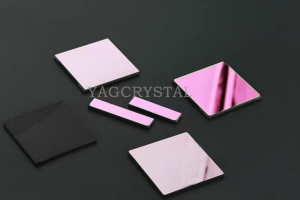
Narrow-Band Filter–Subdivided From The Band-Pass Filter
The so-called narrow-band filter is subdivided from the band-pass filter, and its definition is the same as that of the band-pass filter, that is, the filter allows the optical signal to pass through in a specific wavelength band, and deviates from the band-pass filter. The optical signals on both sides are blocked, and the passband of the narrowband filter is relatively narrow, generally less than 5% of the central wavelength value.
-
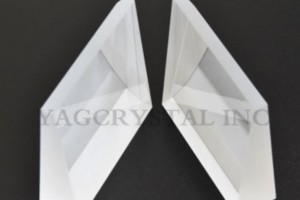
Wedge Prisms Are Optical Prisms With Inclined Surfaces
Wedge Mirror Optical Wedge Wedge Angle Features Detailed Description:
Wedge prisms (also known as wedge prisms) are optical prisms with inclined surfaces, which are mainly used in the optical field for beam control and offset. The inclination angles of the two sides of the wedge prism are relatively small. -
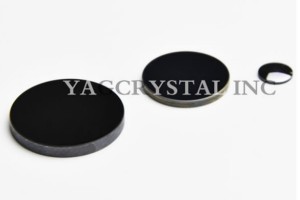
Ze Windows–as Long-wave Pass Filters
The wide light transmission range of germanium material and the light opacity in the visible light band can also be used as long-wave pass filters for waves with wavelengths greater than 2 µm. In addition, germanium is inert to air, water, alkalis and many acids. The light-transmitting properties of germanium are extremely sensitive to temperature; in fact, germanium becomes so absorbing at 100 °C that it is almost opaque, and at 200 °C it is completely opaque.
-
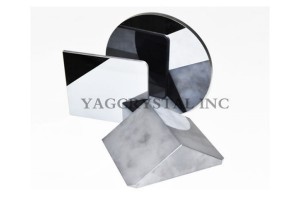
Si Windows–low Density ( Its Density Is Half That Of Germanium Material )
Silicon windows can be divided into two types: coated and uncoated, and processed according to customer requirements. It is suitable for near-infrared bands in the 1.2-8μm region. Because silicon material has the characteristics of low density (its density is half that of germanium material or zinc selenide material), it is especially suitable for some occasions that are sensitive to weight requirements, especially in the 3-5um band. Silicon has a Knoop hardness of 1150, which is harder than germanium and less brittle than germanium. However, due to its strong absorption band at 9um, it is not suitable for CO2 laser transmission applications.
-

Sapphire Windows–good Optical Transmittance Characteristics
Sapphire windows have good optical transmittance characteristics, high mechanical properties, and high temperature resistance. They are very suitable for sapphire optical windows, and sapphire windows have become high-end products of optical windows.
-

CaF2 Windows–light Transmission Performance From Ultraviolet 135nm~9um
Calcium fluoride has a wide range of uses. From the perspective of optical performance, it has very good light transmission performance from ultraviolet 135nm~9um.
-

Prisms Glued–The Commonly Used Lens Gluing Method
The gluing of optical prisms is mainly based on the use of optical industry standard glue (colorless and transparent, with a transmittance greater than 90% in the specified optical range). Optical bonding on optical glass surfaces. Widely used in bonding lenses, prisms, mirrors and terminating or splicing optical fibers in military, aerospace and industrial optics. Meets MIL-A-3920 military standard for optical bonding materials.
-

Cylindrical Mirrors–Unique Optical Properties
Cylindrical mirrors are mainly used to change the design requirements of imaging size. For example, convert a point spot to a line spot, or change the height of the image without changing the width of the image. Cylindrical mirrors have unique optical properties. With the rapid development of high technology, cylindrical mirrors are more and more widely used.
-
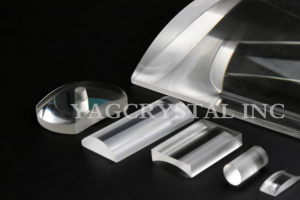
Optical Lenses–Convex And Concave Lenses
Optical thin Lens – A lens in which the thickness of the central portion is large compared to the radii of curvature of its two sides.
-

Prism–Used To Split Or Disperse Light Beams.
A prism, a transparent object surrounded by two intersecting planes that are not parallel to each other, is used to split or disperse light beams. Prisms can be divided into equilateral triangular prisms, rectangular prisms, and pentagonal prisms according to their properties and uses, and are often used in digital equipment, science and technology, and medical equipment.
-

Reflect Mirrors– That Work Using The Laws Of Reflection
A mirror is an optical component that works using the laws of reflection. Mirrors can be divided into plane mirrors, spherical mirrors and aspheric mirrors according to their shapes.
-

Pyramid–Also Known As Pyramid
Pyramid, also known as pyramid, is a kind of three-dimensional polyhedron, which is formed by connecting straight line segments from each vertex of the polygon to a point outside the plane where it is located.The polygon is called the base of the pyramid. Depending on the shape of the bottom surface, the name of the pyramid is also different, depending on the polygonal shape of the bottom surface. Pyramid etc.

Products
K9,ZF6,Quartz,Sapphire,CaF2,MgF2,ZnSe,Ge,Si and so on .Customization and processing of lenses of various sizes.Coating:AR,PR,HR
